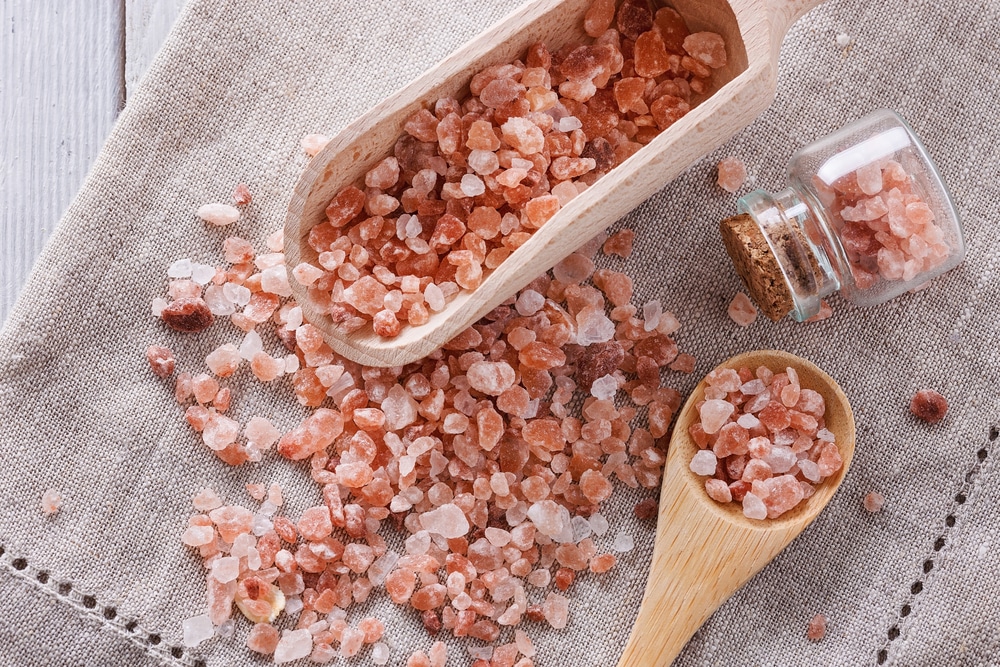
Rock salt is widely known as culinary salt, and there are hundreds of recipes where rock salt can be useful. In fact, it has the perfect size of grains which makes it easy to dissolve and add flavor to the food. It wouldn’t be wrong to say that rock salt is pretty easy to find and is affordable, but there are still times when you cannot get rock salt, and we are here to share substitutes for rock salt.
What Is Rock Salt?
Rock salt is commonly known as halite, and it’s the same as fine table salt. Rock salt has sodium chloride and has the isometric crystals. Depending on the mineral content, rock salt is available in a variety of colors, including clear and white. The white or clear rock salt is more common because it’s been refined and processed to make sure for regular consumption without compromising on safety. In fact, you’ve to be very particular about purchasing rock salt and check the label for “edible” salt.
Substitue For Rock Salt
1. Kosher Salt
Now that we have started sharing information about rock salt substitutes, kosher salt is the first one of the list. This is a traditional salt that’s commonly used in meat preparation, particularly in Jewish ceremonial meat. Kosher salt is utilized for drawing out blood for rendering the meat in kosher form, which is why it was called kosher salt in the first place. Kosher salt is known for the clean salt flavor without adding any bitterness that everyone hates about iodized salt.
Kosher salt has bigger crystals as compared to table salt, which makes it an amazing substitute for rock salt. In addition, there are no anti-caking ingredients or iodine in kosher salt, which makes it a healthier option. However, the bigger crystals mean that crystals won’t dissolve quickly and is perfect for making salt crusts. Moreover, it’s suitable for making ice cream. As far as the substitution amount is concerned, you have to start with 50% less kosher salt and add more if the recipe demands.
2. Himalayan Pink Salt
This is another great alternative for people who cannot use rock for any reason. Himalayan pink salt is sourced from Pakistan and is known for the larger grains. It is mined, and there are mineral traces in the salt, which results in pink color. Himalayan pink salt has a crystal size similar to kosher salt’s crystals. In addition, some grocery stores have extra coarse salt available, and its grains are similar to the size of rock salt grains. As far as the flavor is concerned, it’s just like other salt varieties.
Also, you can opt for a 1:1 substitution ratio for replacing rock salt with Himalayan pink salt. However, you’ve to remember that it’s pricier, so save up some bucks.
3. Maldon Sea Salt
As the name suggests, Maldon sea salt is taken out from seawater, and it comes from the United Kingdom (Essex, to be precise). Maldon sea salt has crystals bigger than other types of sea salt. For the most part, it looks like kosher salt, which makes it a great option for recipes that need rock salt. However, you need to remember that it’s sold as finishing salt and it will be more expensive. On top of everything, start with half the amount of this sea salt to replace rock salt and add more if need be.
4. Coarse Salt
Coarse salt is known as any salt that’s crystals bigger than fine salt. It wouldn’t be wrong to say that coarse salt is a thicker form of conventional table salt. The best part about choosing coarse salt is that it’s easy to find in the supermarket and it’s pretty affordable as well.
5. Table Salt
Table salt is another option for people who are still looking for a rock salt substitute because the chemical composition is the same as rock salt. In addition, table salt is extremely refined, and there are no minerals, but the salty content is pretty less. Topping it all, table salt can be used in sweet as well as savory recipes. Also, it’s pretty affordable and easy to get your hands on. However, you need to remember that there are some additives and iodine mixed in this salt.